Manually deploy a Conductor on the Google Cloud Platform (GCP)
You can deploy an Airwall Conductor on GCP and manage physical, virtual, and cloud Airwall Edge Services, and Airwall Agents. Use the following steps to manually deploy on the Google Cloud platform. If you do not require any special configuration, see Deploy a Conductor on the Google Cloud Platform (GCP) with marketplace.
Prerequisites
To get started, make sure you have access to your Google Cloud account. If you do not have an account, you can create a free Google Cloud account and upgrade it to a full account later. If you have an existing Google Cloud account, make sure your billing information is set up. You cannot create a project until you are able to link your billing information to your newly created project.
A Conductor license voucher is necessary at the end of this procedure if you want to start the Conductor and verify it is set up correctly. Fulfillment will provide this to you in an email after your purchase is complete.
Log in to Google Cloud
From a Web browser, navigate to https://console.cloud.google.com. You will see one of two pages, the Getting Started page if you have no projects or the Home page if you have existing projects.
Create and configure a project
-
On the top bar of the Google Cloud page, click Select a
project.

-
On the upper-right corner of the Select a project dialog, click New
Project.

- In the Project Name field, enter a name for your new project. By default, your new project is assigned a default ID, which you can change by clicking Edit to the right of the Project ID field.
- Optional:
If you want to add your project to an organization you have already created,
select it in the Location field by clicking
Browse to the right. For more information about
organizations, see Quickstart Using Organizations in the
Google Cloud documentation.
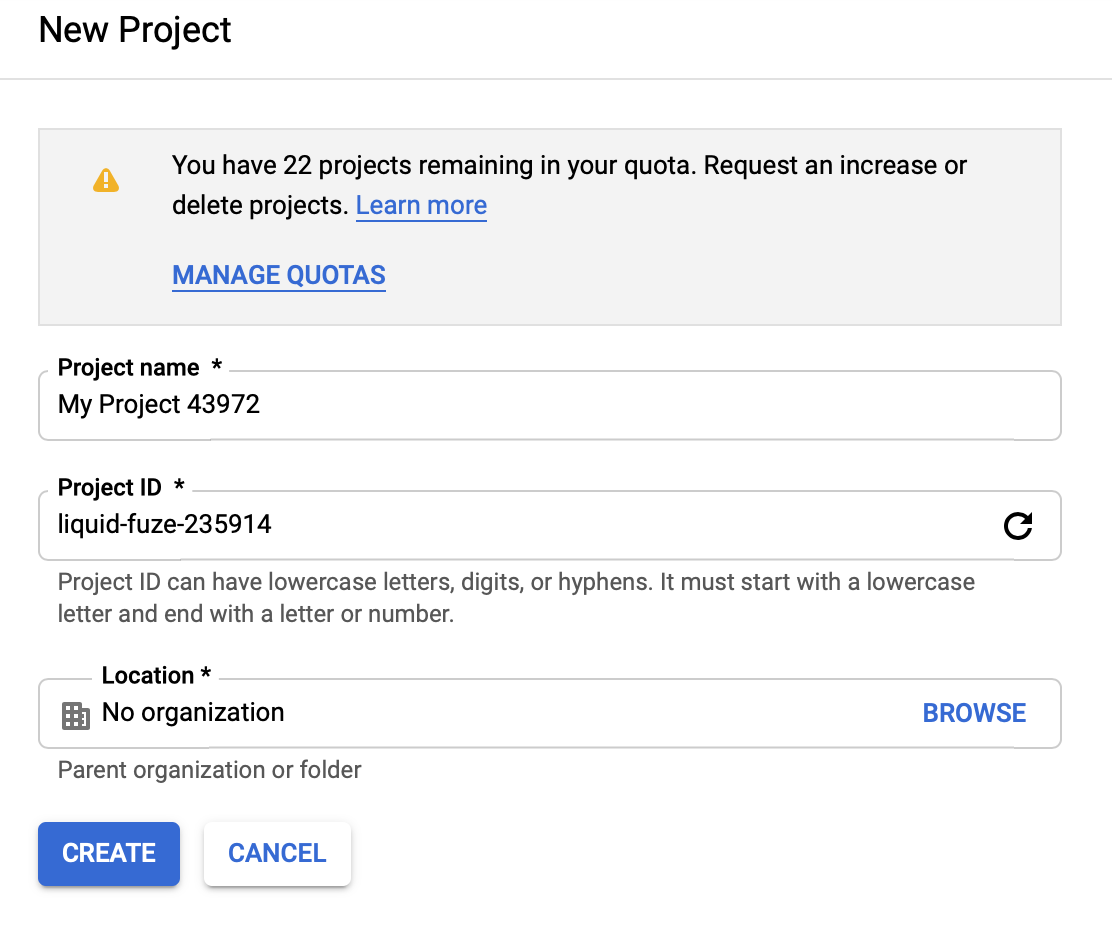
- Once you are finished, click Create.
Set up firewall rules
GCP firewall rules will manage the traffic coming into your instance on a network. By default, you have a network with a default set of firewall rules for your region, and you will need to make a few changes to set up your environment so the Conductor can function correctly.
To set up firewall rules:
-
In the Google Cloud sidebar, navigate to the Networking
section, hover over VPC network, and select
Firewall rules.
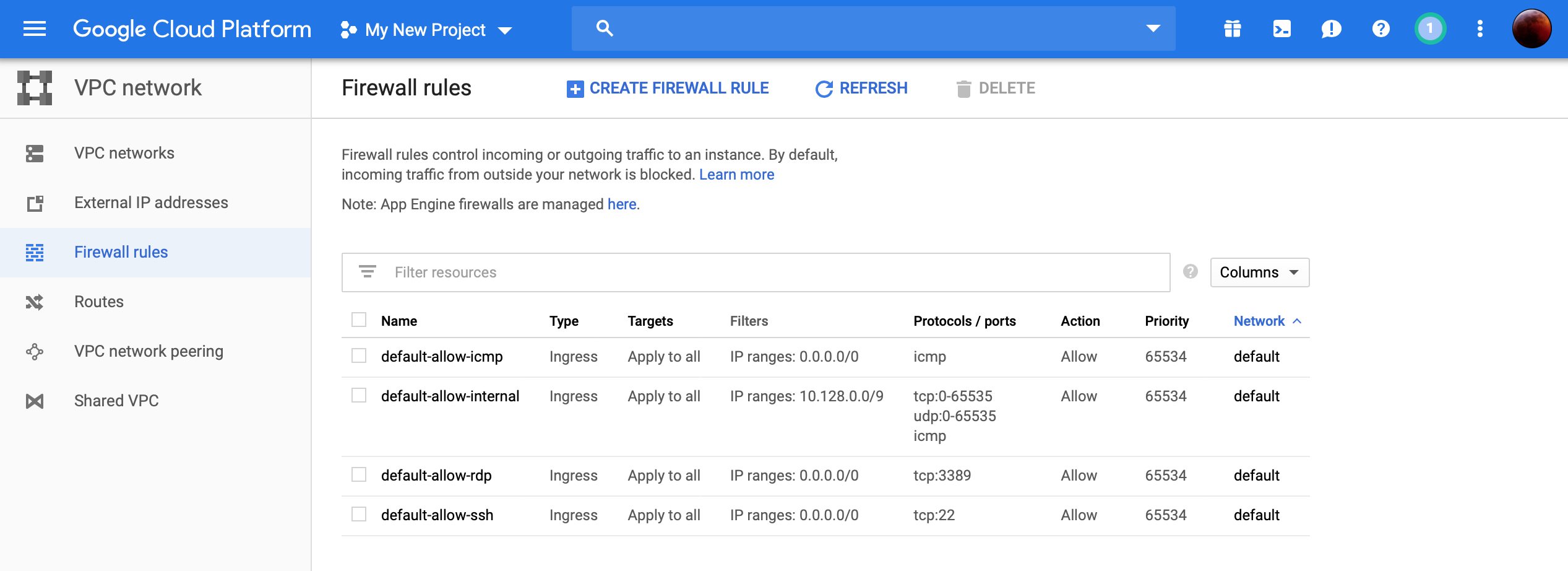
-
Click Create Firewall Rule.

-
Fill in the Create firewall rule page with the following
information:
- Name
- You can use any name you choose, but it must be lowercase with no spaces.
- Description
- This can be anything you like. We recommend something descriptive such as Firewall access rules for OpenBlue Conductor.
- Network
- Select default from the drop-down unless you are using a different network.
- Direction of traffic
- Select the Ingress radio button.
- Action on match
- Select the Allow radio button.
- Targets
- Select Specific target tags from the drop-down.
- Target tags
-
Enter tempered-conductor-rulesNote: Remember this tag. You will need it later in this procedure.
- Source filter
- Select IP ranges from the drop-down.
- Source IP ranges
- Enter 0.0.0.0/0.
- Protocols and ports
-
Select the Specified protocols and ports radio button and enter 443,8096.
Note: Do not check the box next to tcp and then select the field to enter your ports – the box will revert to unchecked and disable both fields. Click only on the field to enter your ports.Leave all other fields as is.
Your page should look similar to the image below: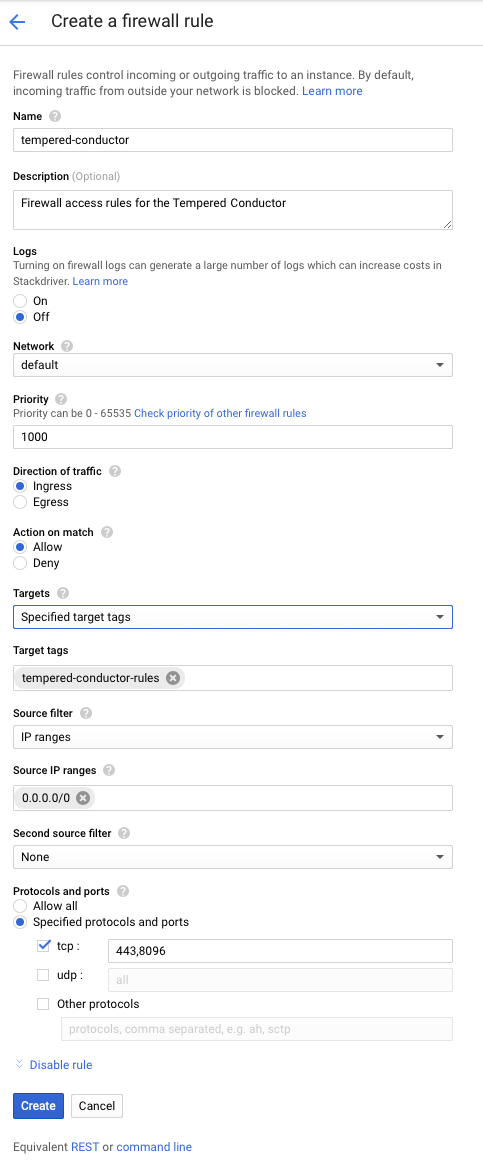
-
Click Create. It will take a moment to finish the
operation. Once complete, you should see the following in your rules list:

Add a Conductor Image
Add a Conductor image to create an instance in your Google Cloud project.
To add an image:
-
In the Google Cloud sidebar, navigate to the Compute
section, hover over Compute Engine, and select
Images.
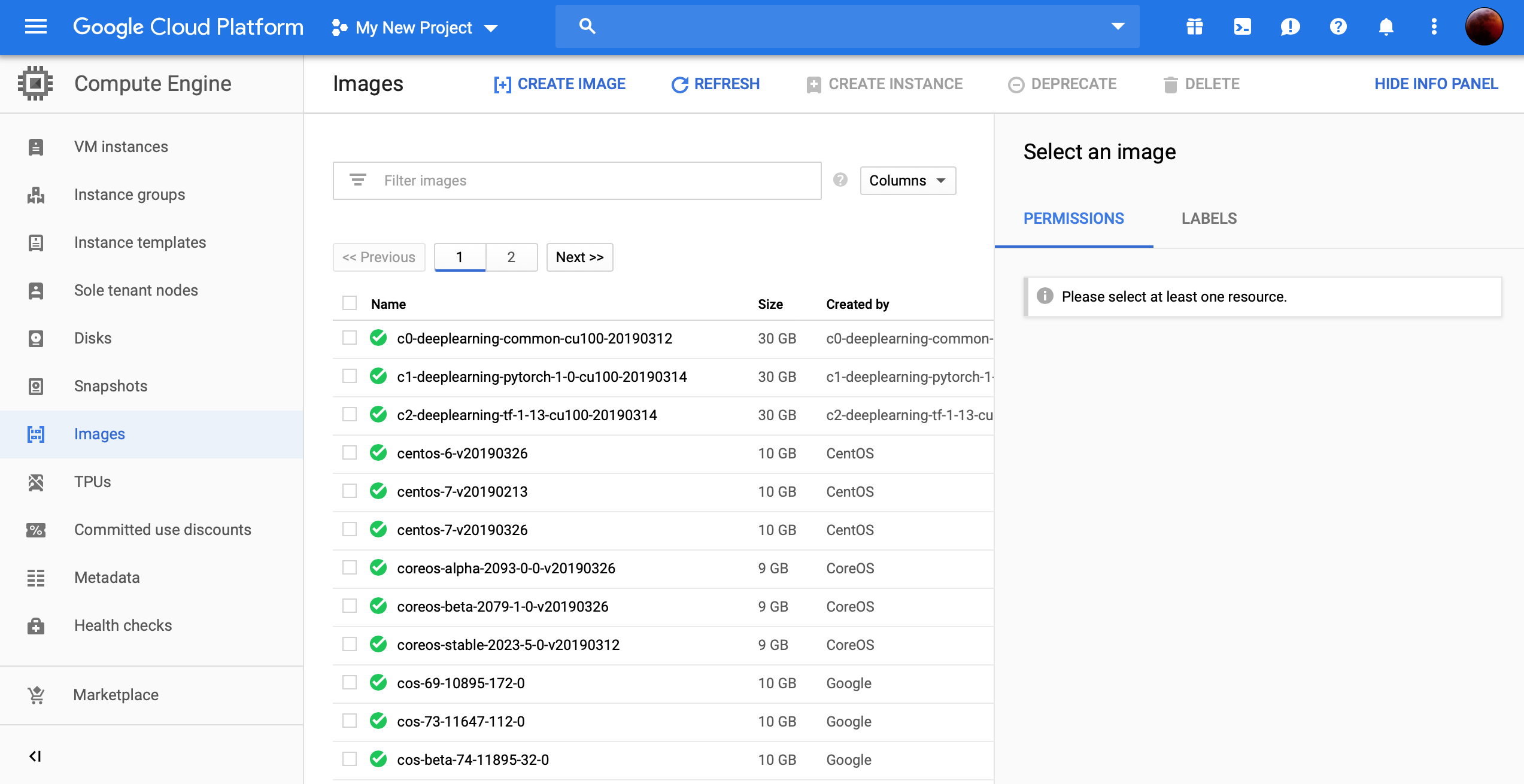
-
Click Create Image.

-
Fill in the Create an image page with the following information:
- Name
- Enter conductor-r300-1721.
- Description
- Enter OpenBlue Conductor version 3.0.0.
- Source
- Select Cloud Storage file from the drop-down.
- Cloud Storage File
-
Enter tempered-image-storage/conductor-r300-1721.tar.gz.
You can leave all other fields as they are.
-
Click Create. It will take a moment to finish the
operation.
Once complete, you should see the following in your images list:

Note: If you have multiple projects, make sure the image is associated with your desired project, listed in the Created by column.
Create a Conductor Instance
To create a Conductor instance:
-
Select the image in the list by clicking on its name. You have several options
available: Select Create Instance.
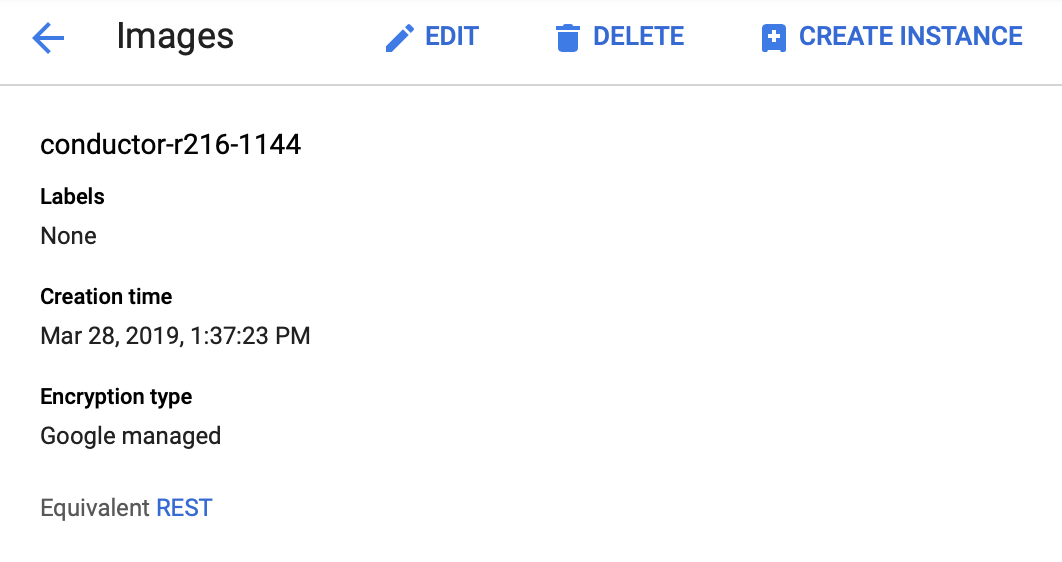
-
Fill in the Create an instance page with the following
information:
- Name
-
Enter a name of your choice, but it must be lower case and without spaces.
- Region
- Select the region of your choice from the drop-down.
- Zone
- Select the zone of your choice from the drop-down.
You can leave all other fields as is.
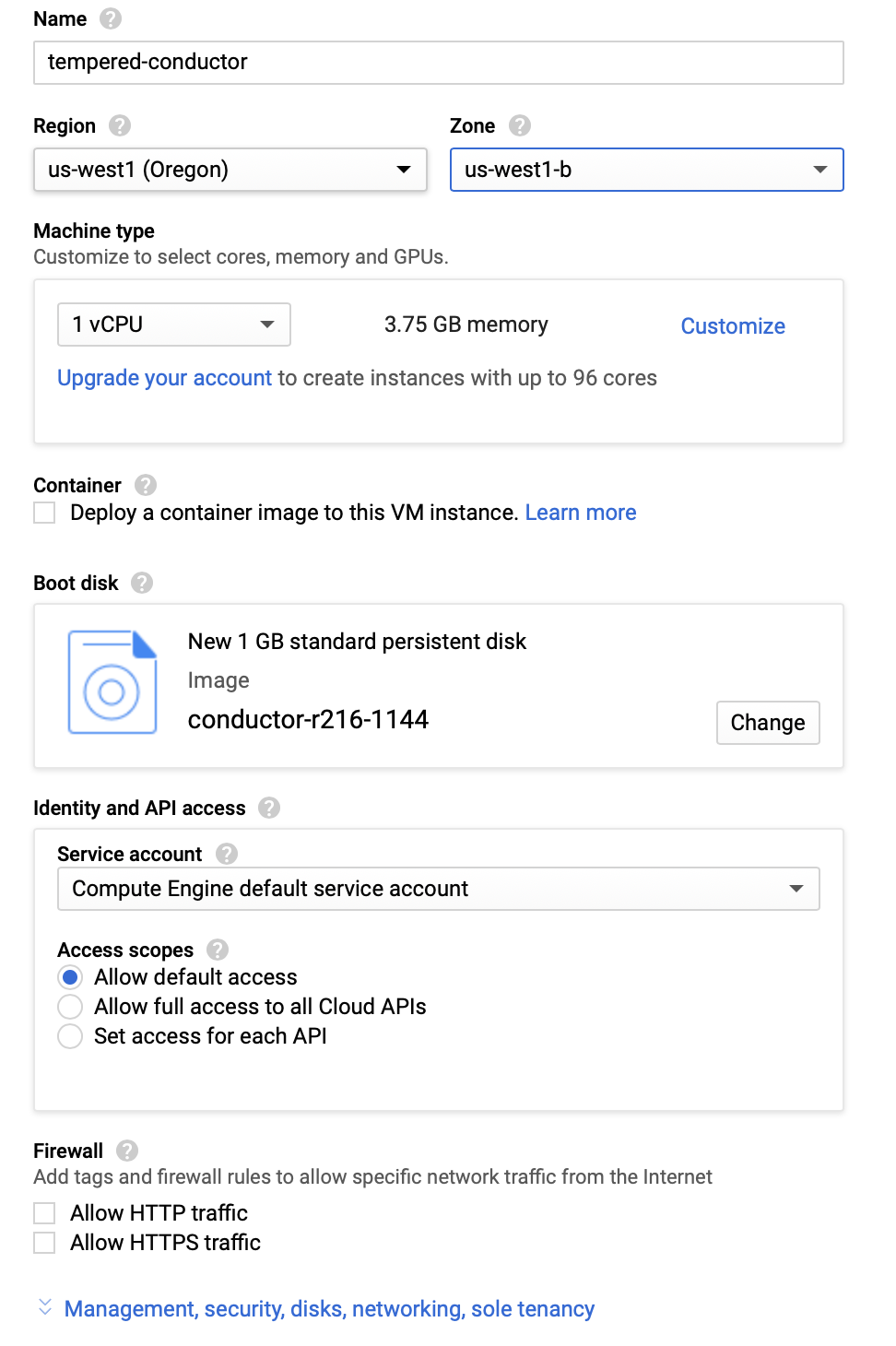
- Click Management, security, disks, networking, sole tenancy.
-
On the Disks tab, leave all settings as is and click
+ Add new disk.
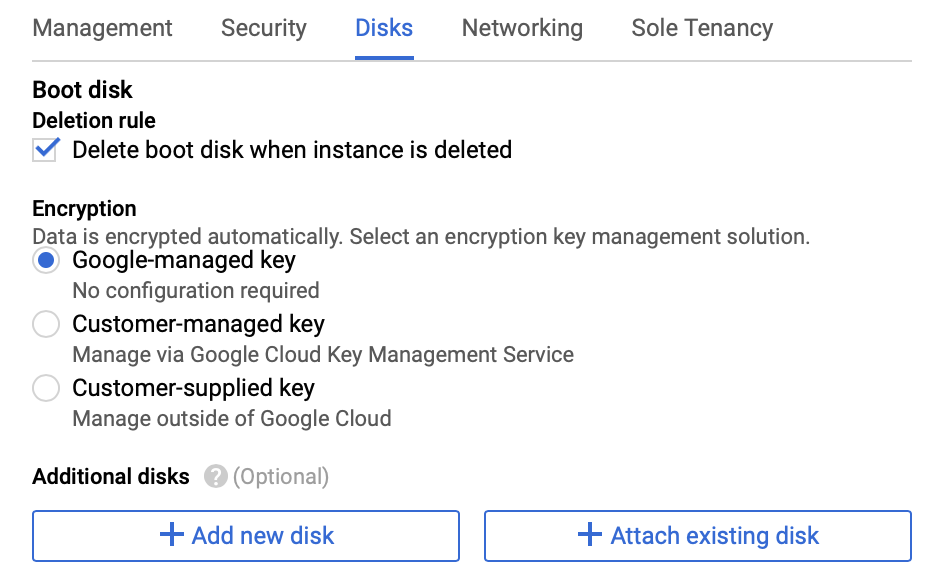
-
In the New disk dialog enter the following:
- Name
-
You can leave this field as disk 1, otherwise enter a name of your choice.
- Type
-
Select Standard persistent disk from the drop-down.
- Source type
-
Select Blank disk.
- Deletion rule
-
Select the Delete disk radio button
- Size (GB)
-
Enter the value 200
You can leave all other settings as is.
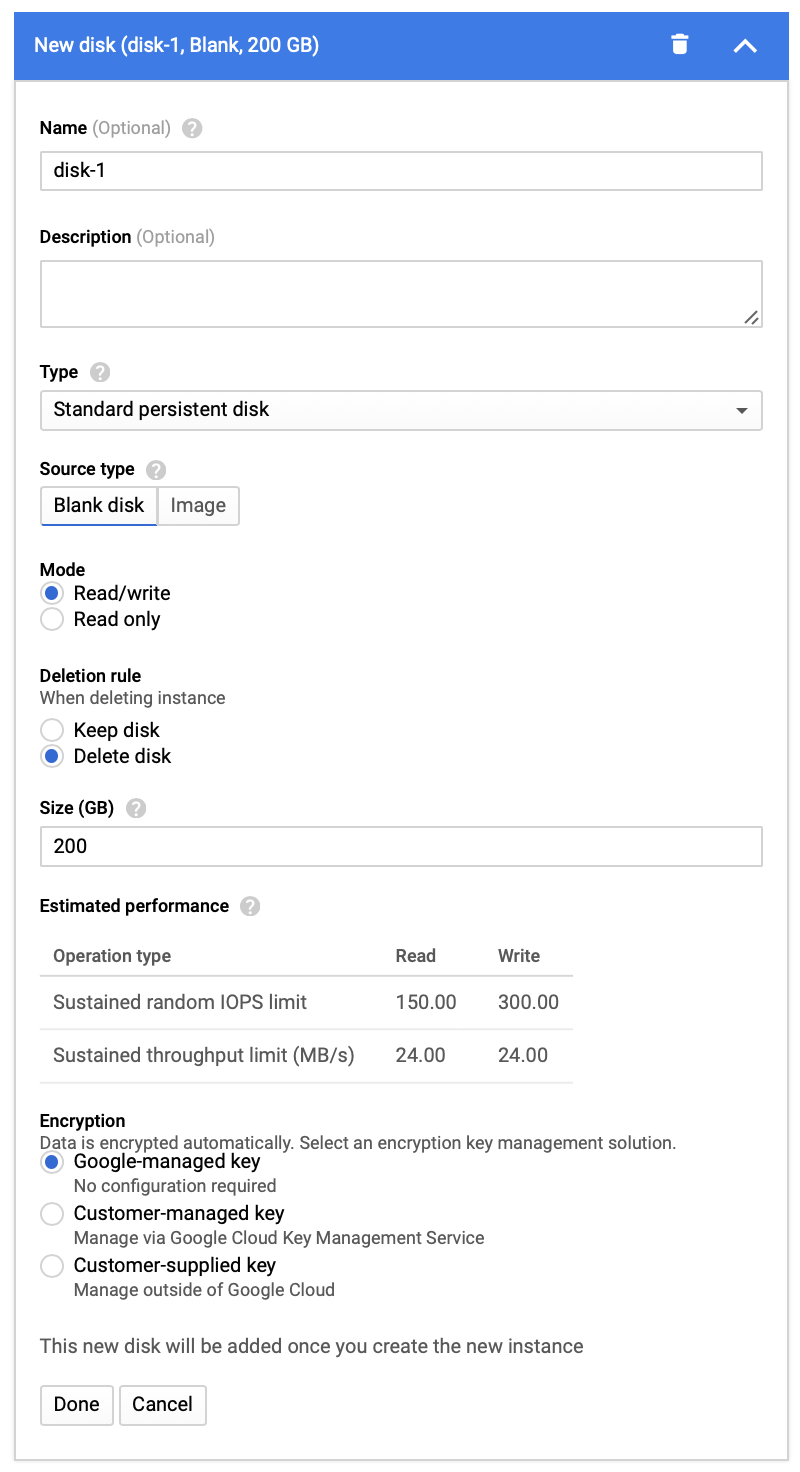
-
Click Done. The dialog will close, and you should see
the following:

-
Click the Networking tab to the right of the
Disk tab and enter the tag name you created for your
firewall rules in step 3.
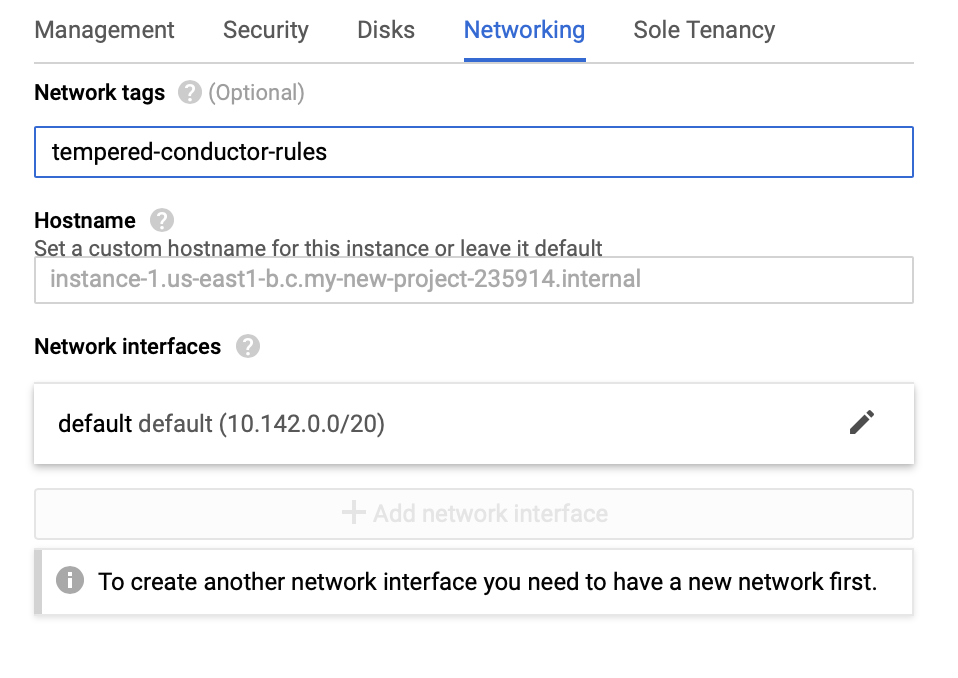
-
Click Create. It will take a moment to finish the
operation. Once complete, you should see the following:

Note: The External IP for your instance is the address you will use to connect to the Conductor.
Verify, Configure, Provision, and License a Cloud Conductor
It may take several minutes for the Conductor to become available after it starts, so if you attempt to access it and your browser appears to stop responding, please try again in a few minutes.
- Alibaba Cloud – Tnw-<instanceID>
- Amazon Web Services – Tnw-<instanceID>
- Microsoft Azure – Tnw-<privateIpOfPublicNic>
- Google Cloud – Tnw-<instanceID>
Additional Information
Once your Conductor is installed, you can configure and manage it as you would a physical Conductor. See Configure a Conductor. For additional help, you can search Airwall help by using the search bar at the top of the page or the navigation links to the left.
